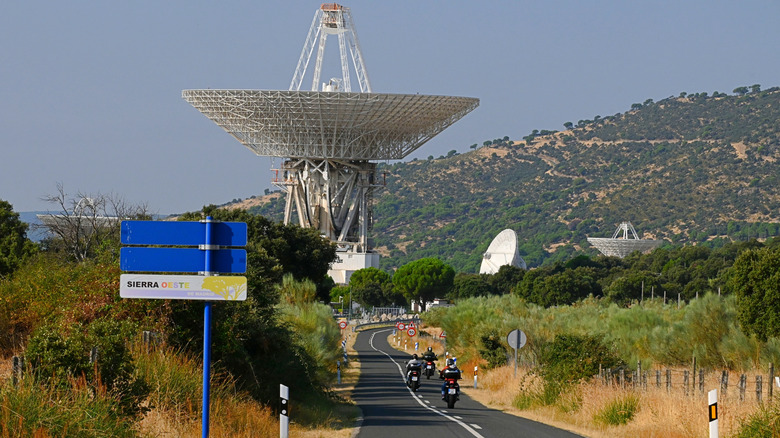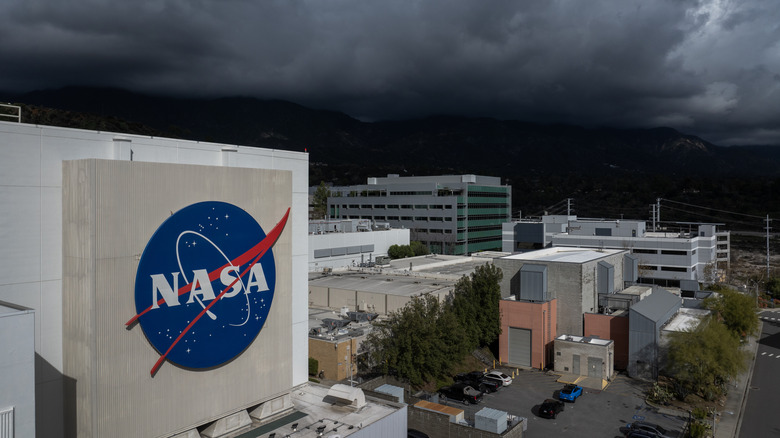A Major NASA Antenna Was Flooded And Remains Out Of Service
One of NASA's deep space antennas that has been critical for communication with spacecraft for years hasn't been working since September 16, 2025. Located in Goldstone, California, the antenna referred to as DSS-14 is part of NASA's deep space network (DSN). Its purpose is to communicate with astronauts, track asteroids, and send messages to unmanned spacecraft.
The DSS-14 over rotated in September putting pressure on the cables and pipes of the antenna and ultimately breaking the fire suppression system. The antenna flooded, though the flooding has since been put under control. This is a huge blow to space communication and has forced NASA to rely on other antennas in their DSN system in the months since.
NASA has been surprisingly quiet about the details of this incident, including why the antenna over rotated, the timeline to fix it, and how mission communications are being impacted. This is likely because NASA is not exactly thriving right now. The government shutdown has had a negative impact, and the agency itself is undergoing internal restructuring including laying off over 500 employees at the Jet Propulsion Lab. You know, the same lab that oversees the operation of the DSS-14 and the deep space network as a whole.
The impact of the deep space antenna loss
The DSS-14 is one of the largest deep space antennas in the network at 299 feet, and it has been a workhorse for NASA. It has been key in communicating with the Voyager probes that ventured outside of our solar system, with various missions to Mars, and for NASA's Artemis program. The uncrewed lunar mission Artemis I was completed in late 2022. Now NASA turns its focus to the major goal of sending people back to the moon for the first time in 50 years with Artemis II. This is planned for April 2026, and no doubt DSS-14 will be critical for the mission.
The deep space network is already pushing its limits and is overbooked in terms of communication. The Artemis I mission required so much DSN attention that other missions considered less important had to make adjustments. This problem is only anticipated to worsen as space exploration becomes more common.
Though DSN antennas have been out for months in the past, such as one in Australia undergoing almost a year of upgrades, it still creates strain on an overwhelmed agency. Especially with the DSS-14's loss being unexpected. An already bloated workload for a DSN that is short one antenna will not be easy to cope with.
Why did the NASA antenna break?
Aside from knowing it over rotated, which caused the damage, more specific details have not been released. Currently, a NASA investigative board is analyzing what happened and why. A comprehensive understanding of the problem should prevent it from happening again in the future.
It's easy to imagine that a government shutdown made this incident more difficult. With thousands of furloughed employees and certain operations put on pause, it makes something like a downed antenna just another hurdle to jump over. The budget for managing the deep space network has also decreased, adding another challenge to antenna maintenance and repair.
NASA has also seen a drastic drop in employees in rapid succession. A very interesting whistleblower report came out that spoke about NASA leadership forcing workers out in order to become compliant with Trump's 2026 fiscal year budget proposal in a move that was being called unlawful. In the report, employees voice concerns about too few people overseeing various operations and how that could end in disaster. Though it's still not clear if the reason DSS-14 broke was because of understaffing and budget constraints or was simply an unforeseeable accident, it's another red flag of a struggling agency. Hopefully the investigative board will present answers soon, and DSS-14 can be back to its important work.


